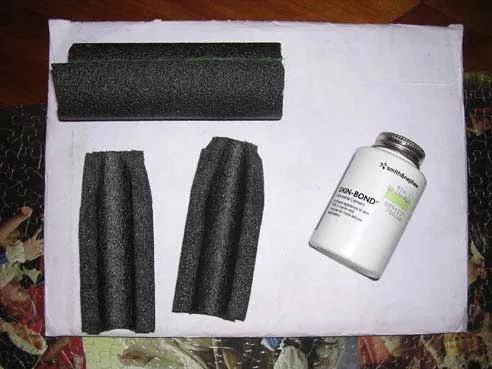Welcoming a German Shepherd puppy into your home is an exciting experience. At just 1 month old, these adorable pups are a bundle of curiosity and rapid development. Owners often find themselves captivated by their playful antics and unique charm, and many will start looking at German Shepherd Puppies Pictures 1 Months Old to compare their own furry companions. During this early stage, German Shepherd puppies are still very much dependent on their mother, but their senses are developing quickly, and they are beginning to explore their surroundings. A common question that arises for new German Shepherd owners, even at this tender age, concerns the development of their ears. While it’s natural to wonder about their iconic upright ears, patience is truly key during these initial months.
Understanding German Shepherd Puppy Development at 1 Month Old
At 1 month old, German Shepherd puppies are experiencing significant milestones. Their eyes and ears are fully open, allowing them to react to sights and sounds. They are typically wobbly on their feet but gaining strength, starting to walk and even play with their littermates. Their primary focus remains on nursing, sleeping, and early socialization within their litter. At this age, a German Shepherd puppy’s ears are almost universally floppy. This is completely normal and expected. The cartilage and muscles in their ears are still soft and developing, and they simply haven’t gained the strength needed to stand erect. There’s absolutely no cause for concern about their ears at this stage; they are exactly where they should be in their developmental timeline. For those interested in breed specifics and traits, you can learn more about different pure black german shepherd puppy price in india and their characteristics.
 A young German Shepherd puppy, likely 1 month old, with soft, floppy ears, observing its surroundings
A young German Shepherd puppy, likely 1 month old, with soft, floppy ears, observing its surroundings
When Do German Shepherd Puppy Ears Typically Stand Up?
The journey for German Shepherd puppy ears to stand upright is unique for each individual dog, but there’s a general timeline to observe. Most German Shepherd puppy ears begin to stand anywhere between 8 weeks and 6 months of age. It’s not uncommon for one ear to stand before the other, or for both ears to pop up and then flop back down temporarily. This “yo-yo” effect often happens when a puppy is teething, typically between 16 and 20 weeks of age. The body diverts calcium and other resources to growing permanent teeth, which can temporarily affect ear cartilage strength. Many owners panic when this occurs, but it’s a very common phase, and typically, the ears will eventually go back up. It’s a test of patience, but usually, a natural part of their growth process.
Early Indicators and When to Consider Intervention
While you shouldn’t worry about floppy ears at 1 month, it’s wise to start paying closer attention once your German Shepherd puppy reaches 4 to 5 months of age, especially if their ears haven’t shown any signs of standing. The first step is always to ensure your puppy is in optimal health. This means regular veterinary check-ups, making sure they are free from intestinal parasites (a stool sample analysis is recommended), and providing a high-quality, balanced diet. Proper nutrition is crucial for overall development, including strong cartilage. If your pup is healthy and on a good diet but their ears are still down by 5 months, it might be time to consider intervention, such as ear taping. This is a common practice among German Shepherd breeders and dedicated owners to encourage the ears to stand. Understanding the various pure german shepherd puppy price in india can also provide insight into the care and attention invested in the breed.
 Close-up of materials commonly used for taping German Shepherd puppy ears, including surgical tape and foam rollers
Close-up of materials commonly used for taping German Shepherd puppy ears, including surgical tape and foam rollers
A Step-by-Step Guide to Taping German Shepherd Puppy Ears
If your German Shepherd puppy’s ears are not standing by 5 months, and after confirming their health with a vet, you might decide to tape them. This process requires patience and consistency. Here’s a general approach:
- Gather Materials: You’ll need thin, white surgical tape (such as 3M Micropore tape, 2 inches wide), women’s hair rollers (remove the plastic core, just use the foam), and a popsicle stick.
- Prepare the Ear: Gently wrap the puppy’s ear around a foam roller, ensuring the ear is in a vertical position. Secure it with the surgical tape, forming a snug but not overly tight roll.
- Add Support: Attach a popsicle stick horizontally across the top part of both taped ears to provide additional stability and help hold them upright.
- Consistency is Key: Your puppy will likely try to remove the tape or stick. The most critical aspect of successful taping is to consistently re-tape the ears as soon as the old tape comes off. Sooner or later, most puppies will get used to the tape and ignore it.
- Check Progress: Approximately once a week, carefully remove the tape to assess if the ears can stand on their own. If not, re-tape them immediately.
- Patience and Persistence: Continue this process until the ears consistently stand. If the ears are not up by 7 or 8 months, the chances of them standing naturally or with taping significantly decrease. It’s a dedicated effort that often yields positive results. When considering different breeds and their unique needs, it’s helpful to explore types of dogs in india with pictures and names for broader context.
 A German Shepherd puppy with its ears carefully taped, showcasing the proper method for support
A German Shepherd puppy with its ears carefully taped, showcasing the proper method for support
Post-Taping Expectations and Long-Term Care
Even after successful taping, it’s common for a German Shepherd puppy’s ears to appear a little weak or “floppy” immediately after the tape is removed. This is normal, and with time, the cartilage and muscles will strengthen, allowing the ears to stand firmly. Do not panic if they aren’t perfect right away; give them time. You will get a clearer idea of the final result by the time the pup is around 12 months old. In rare cases where ears still do not stand after consistent taping and maturity, surgical ear implants are an option. However, this is a specialized procedure, and it’s essential to consult with a veterinarian experienced in such surgeries. Finding a reputable breeder or shelter is crucial for a healthy puppy, and knowing about factors like german shepherd black puppy price in india can be part of the preparation for responsible ownership.
 A German Shepherd dog with fully upright ears, illustrating the successful outcome of ear development, possibly after taping
A German Shepherd dog with fully upright ears, illustrating the successful outcome of ear development, possibly after taping
The journey of a German Shepherd puppy, from a tiny 1-month-old bundle to a majestic adult with proudly standing ears, is filled with development and discovery. While the focus at 1 month is on foundational care and early socialization, understanding the timeline for ear development and knowing when to consider intervention like taping can provide peace of mind. Always prioritize your puppy’s overall health and well-being, consult with your veterinarian for any concerns, and remember that patience and consistent care are your best tools in raising a happy, healthy German Shepherd.
